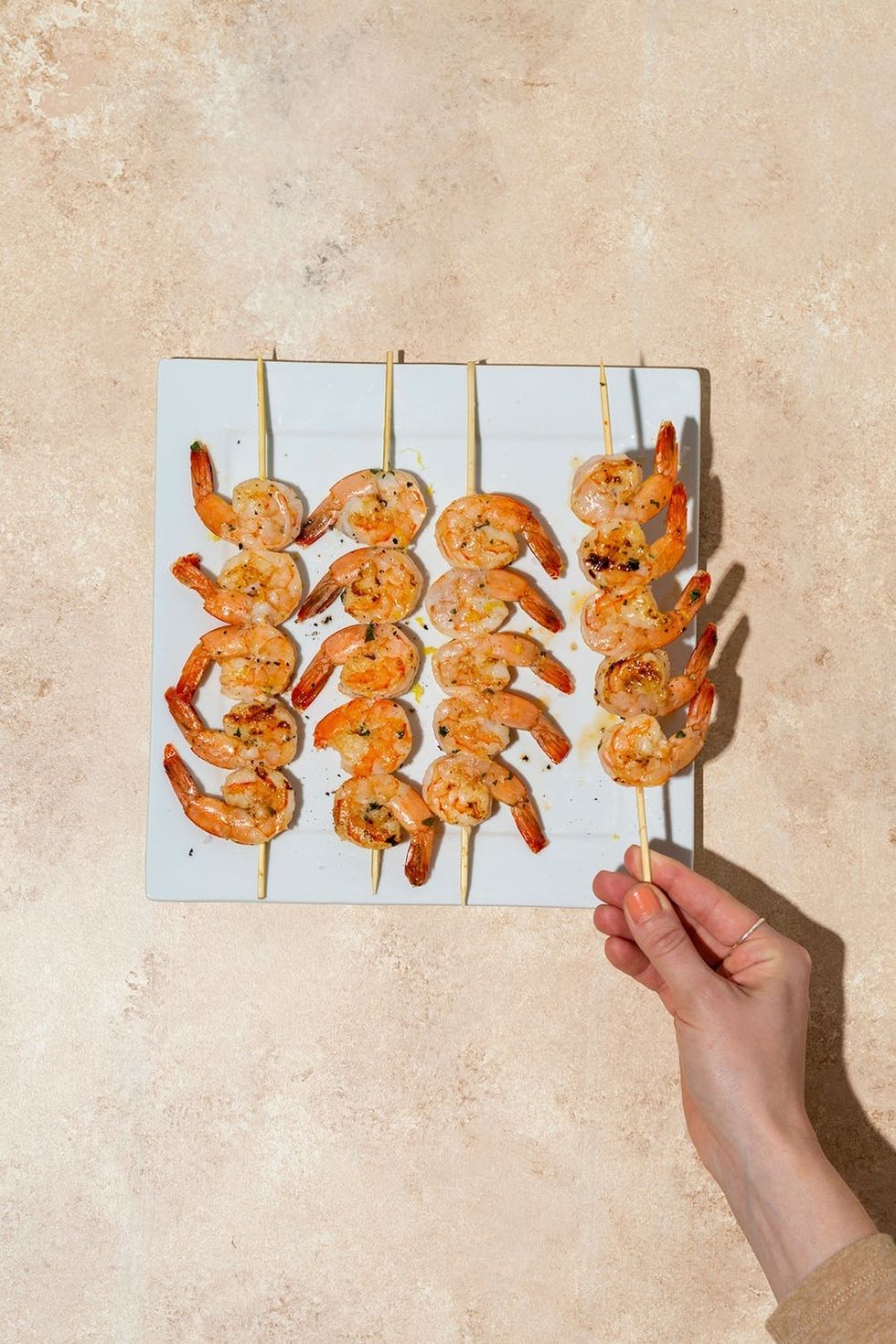Conquer your fear of cooking shellfish once and for all.
How to Quickly Cook Shrimp on the Stovetop, Grill, or in the Oven
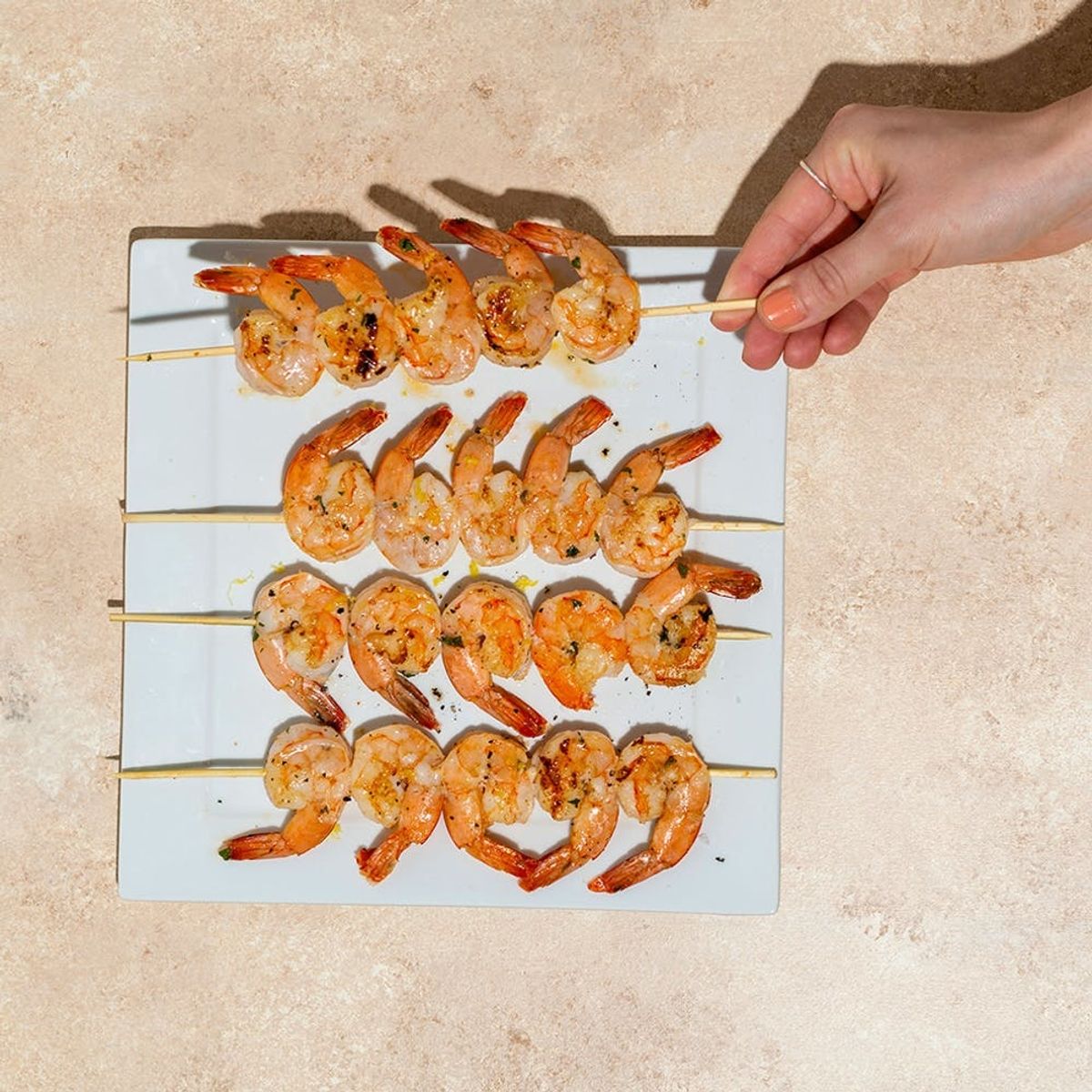
If you’re new to cooking seafood at home, you can easily start with shrimp. Widely available, quick-cooking, and friendly to just about any flavor profile, it’s a beginner-friendly shellfish you can cook all year long. Here’s how to buy the crustacean, three basic cooking methods, and several recipes to get you started.
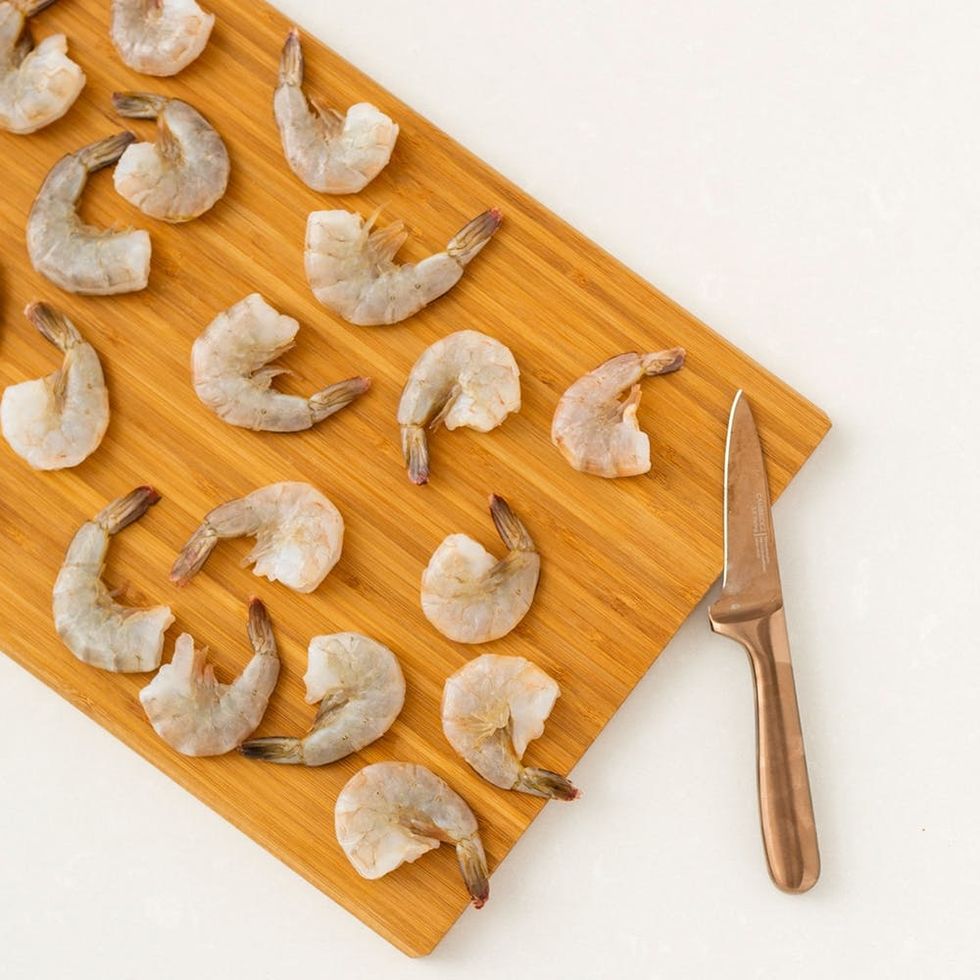
how to shop for shrimp
Shrimp are highly perishable and are usually frozen as soon as they are caught, meaning thats some fresh shrimp may have been frozen. If you plan on cooking the shrimp as soon as you get home, buy it fresh. Make sure they don’t have a fishy smell; it should only smell salty and sea-like. If you plan to wait, opt for frozen.
Shrimp come in several varieties, but the most common in the US is the mild white shrimp. They are priced by the number of shrimp per pound. Just remember not to mix your shrimp sizes, as they cook at different rates. Here is what each size is best for different recipes.
- Small (61 to 90 per pound): Good for soups and chopping into smaller pieces for a stuffing
- Medium (41 to 50 per pound): Best for pastas and bowls
- Large (31 to 45 per pound): A common, dependable go-to for most shrimp recipes; when in doubt, buy large
- Jumbo (16 to 20 per pound): For frying, kebabs, or when shrimp is the star of your dish
- Colossal (8 to 12 per pound): Ideal for shrimp cocktails, hearty stuffed shrimp, or for a showy presentation
Look to Monterey Bay Aquarium Seafood Watch to learn which shrimp is the most eco-friendly at the moment.
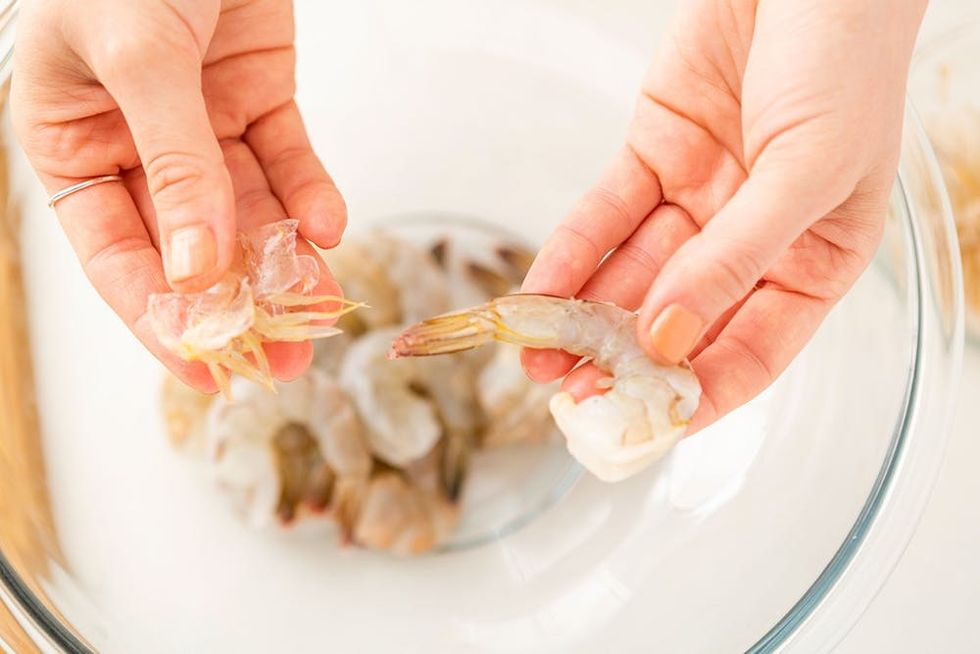
how to prep shrimp
Shrimp must be kept cool from the moment you purchase them until just before you cook them. To thaw frozen shrimp, keep them in the fridge for a day, or run them under cool water if you’re short on time. For convenience and ease, you can buy shrimp head-off, peeled, and deveined (AKA ready to be cooked).
If you buy them head-on and/or unpeeled, you’ll have a few extra steps, though you might save some money and find that they have more flavor. To remove the head of a shrimp, gently twist it to release. Next, remove the legs to loosen the shell, which you should be able to peel off easily with your thumbs.

To devein the shrimp, make a shallow cut with a paring knife along the dark line (that’s the gastrointestinal tract), and pull it out. Whether or not you remove the tail is up to you and your recipe.
Once the shrimp are prepared, you can cook them using just about any method in a matter of minutes. These are the essential techniques to know.
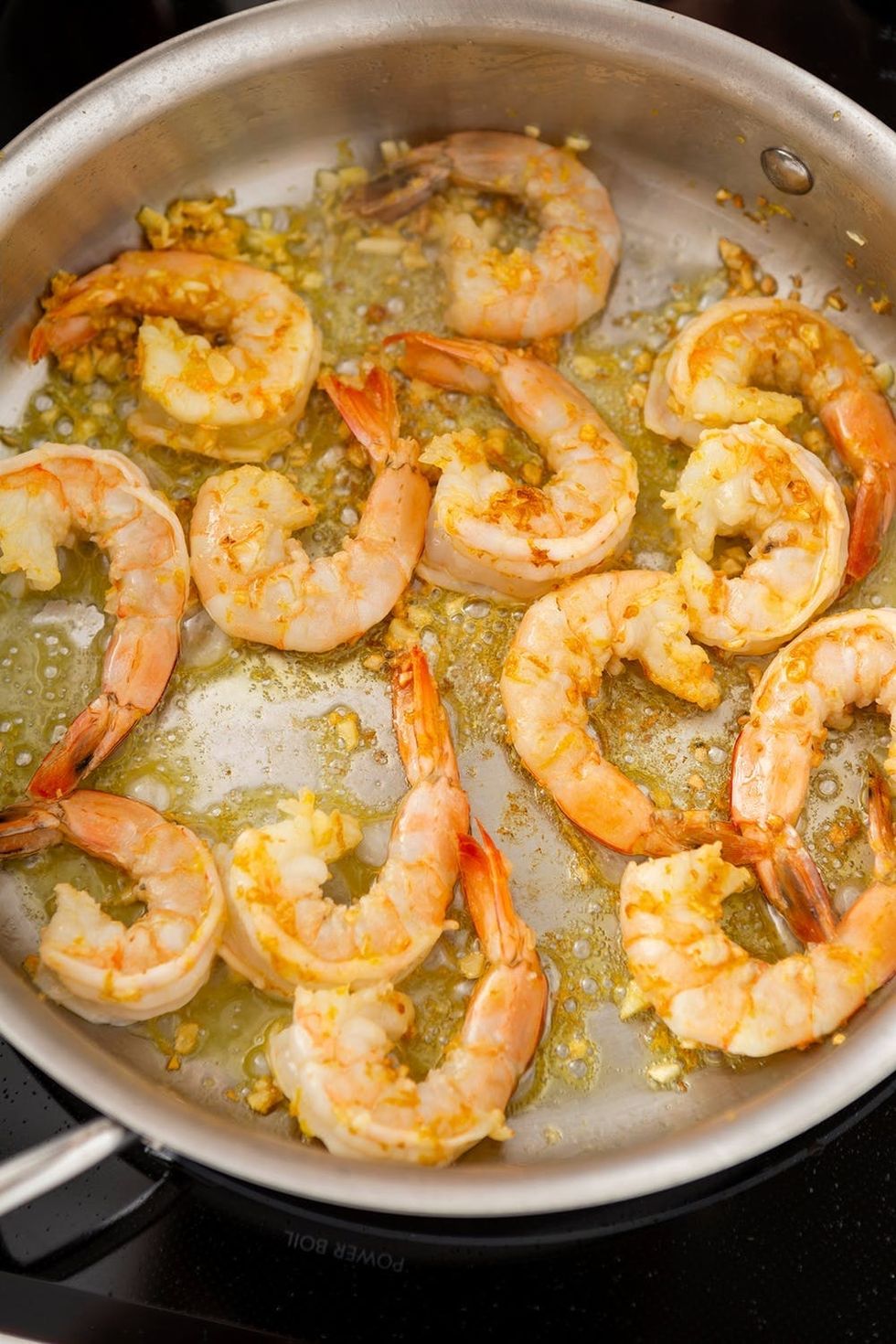
Pan-Sear
You hardly need a recipe to pan-sear shrimp. Just place a skillet over medium-high heat, add butter or olive oil, and cook the shrimp in a single layer for about 1-2 minutes per side, leaving them alone while they cook. You’ll know they’re done when their color has turned white/orange and opaque. Remove from heat right away. You might be tempted to cook them for a minute longer, but don’t; they will be overly chewy if you do.
Recipe to Try: Garlicky Shrimp With Fettuccine
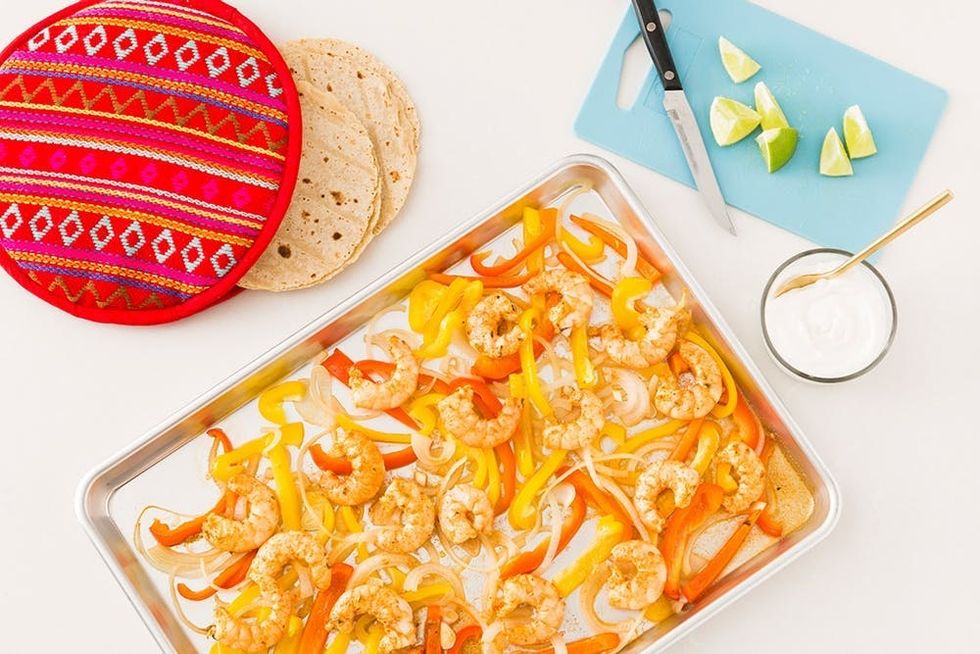
oven-ROAST
Shrimp also cook quickly in the oven, making them a prime protein candidate for sheet-pan dinners. The cook time will depend on the size of your shrimp and your oven’s temperature, but expect them to take roughly 8 to 10 minutes with the oven set to 400°F to 450°F. To ensure even cooking, roast the shrimp in the middle rack and flip halfway through.
Recipe to Try: Sheet-Pan Shrimp Fajitas
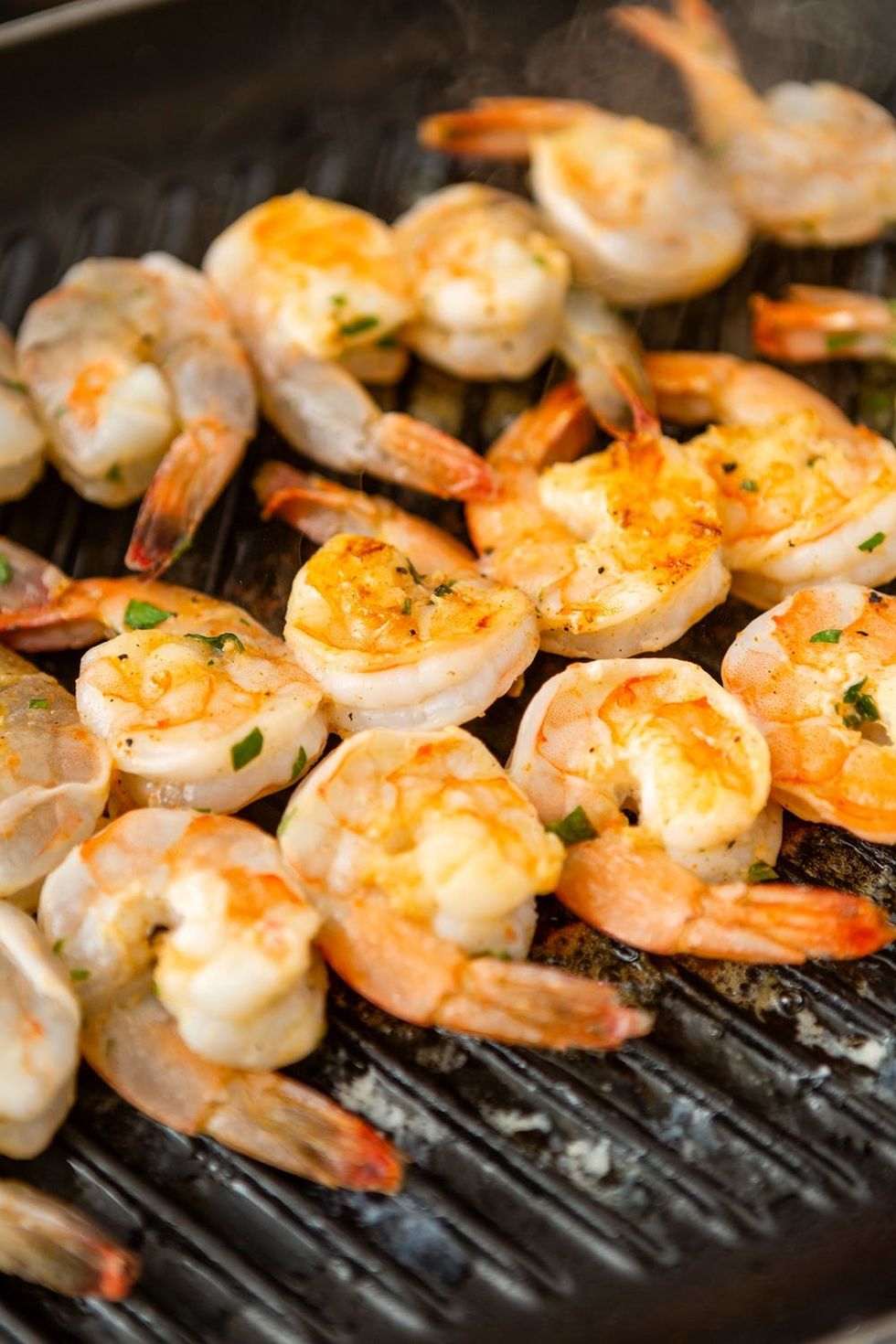
grill
Forget steaks and burgers. Shrimp cook on the grill much faster (as in, a couple of minutes per side) and arguably more furiously than most meats. Buy a few pounds of shrimp (large to colossal is best for grilling), thread the pieces onto skewers (exposing the flat sides of the shrimp), and sizzle away.
Recipe to Try: Grilled Harissa Shrimp With Chickpea-Dill Tomato Sauce
RELATED: You Will Have Heart Eyes for These Easy Salmon Recipes
(Styling by Cassidy Miller, Kayla Haykin, and Anna Monette Roberts / Brit + Co; photos via Brittany Griffin / Brit + Co)




